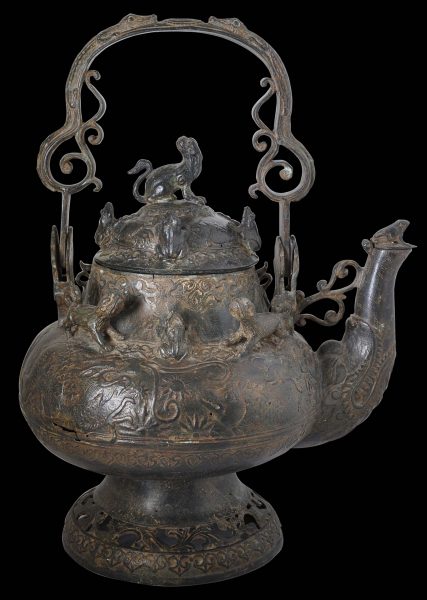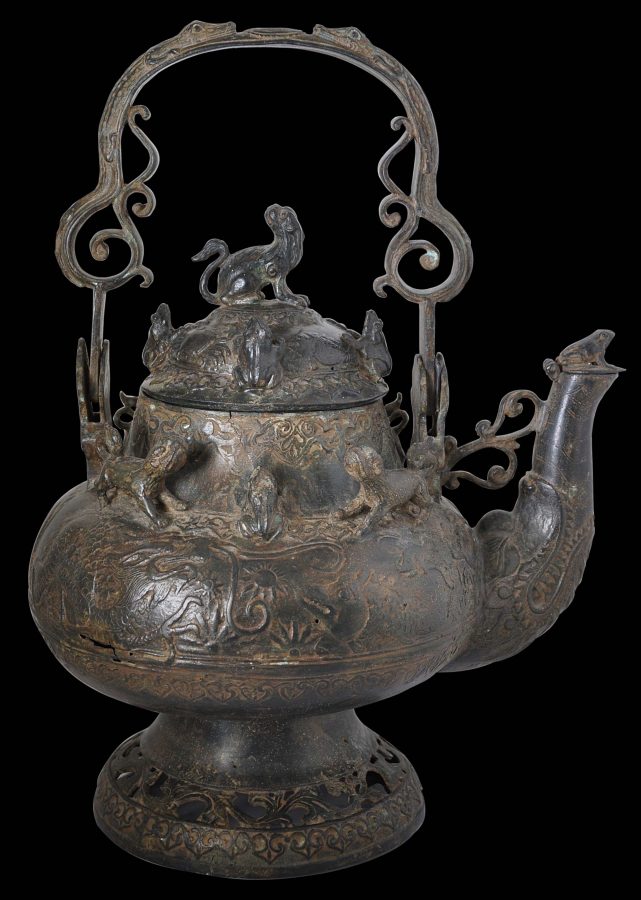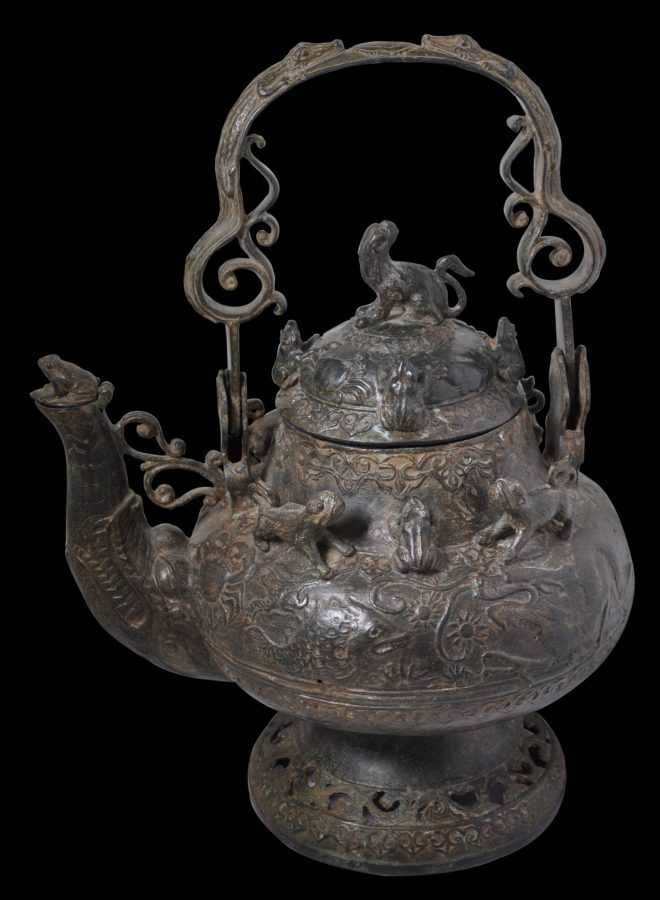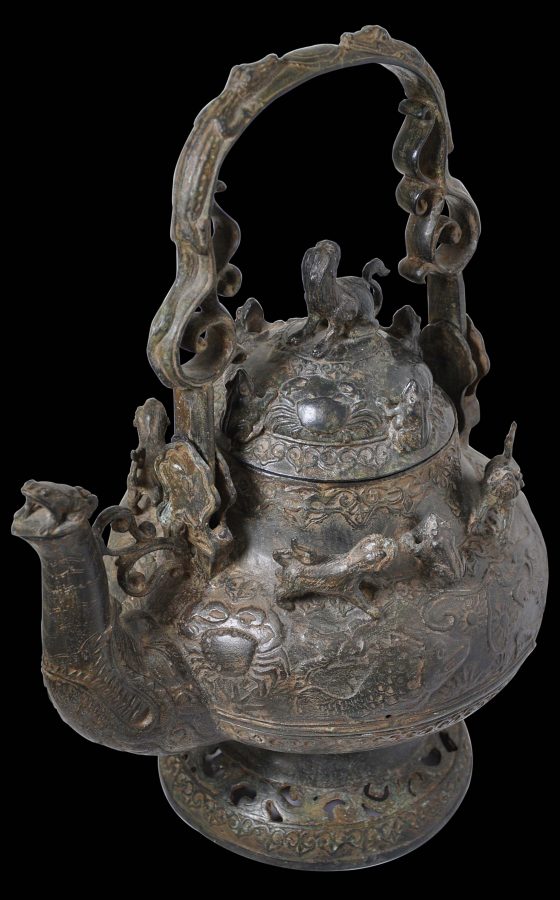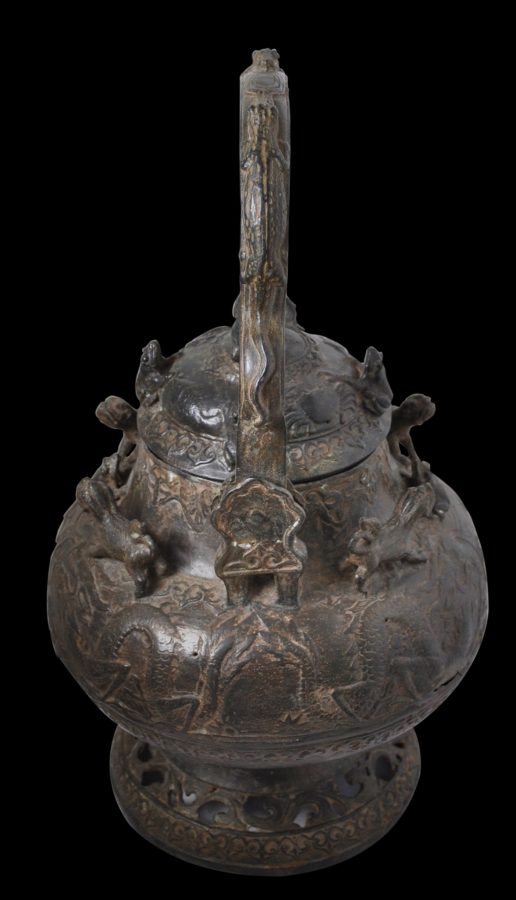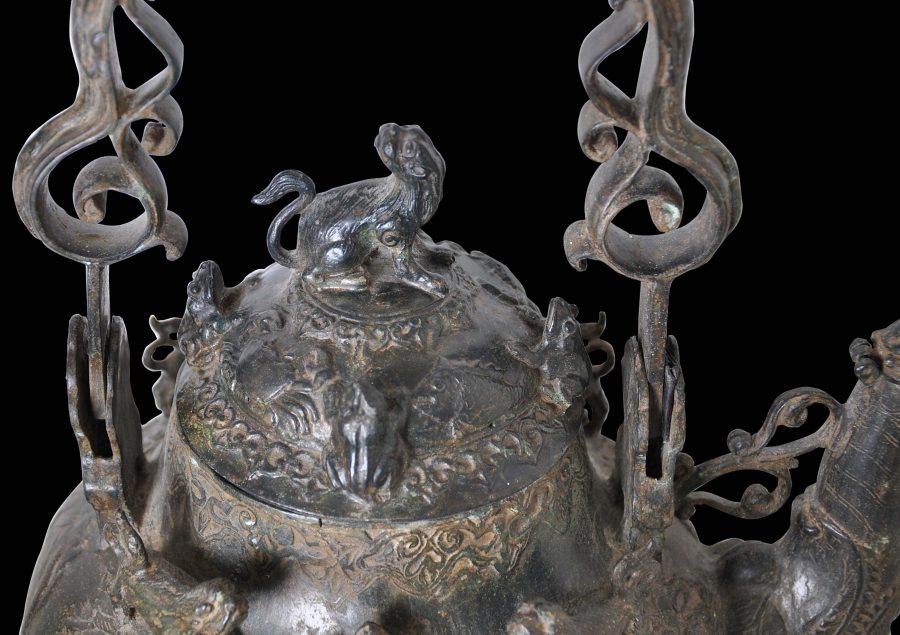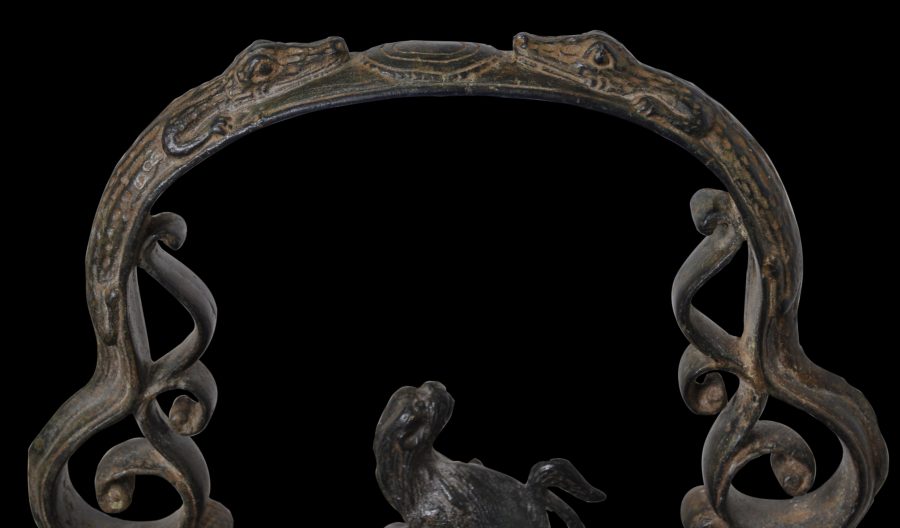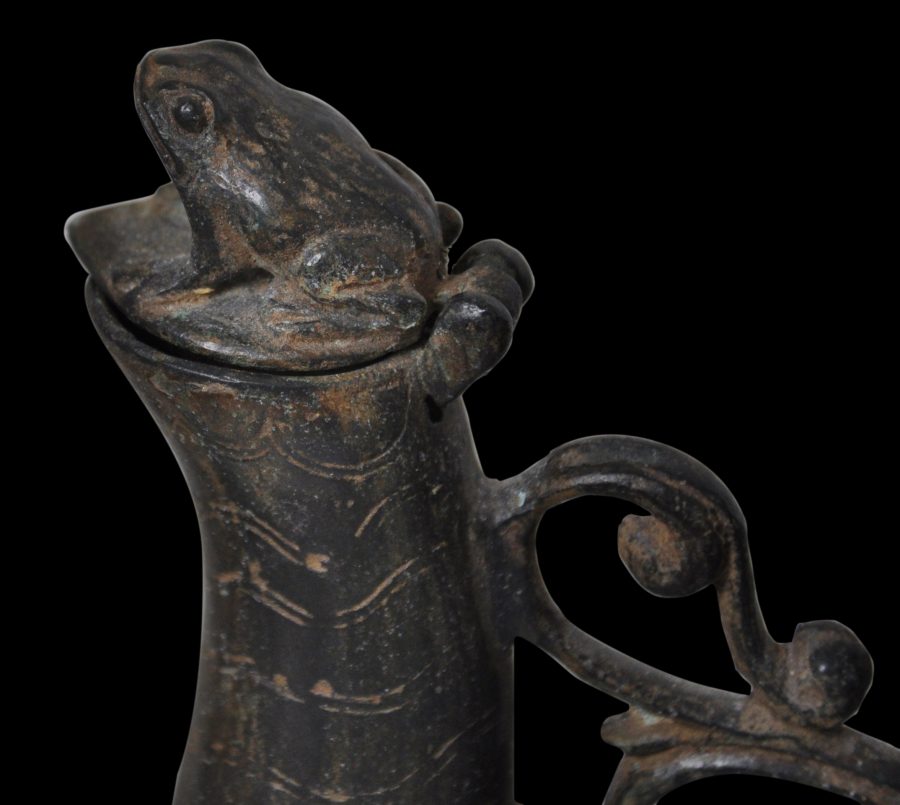This monumental, massive brass or bronze kettle was cast in the 18th or 19th century on Borneo island, most probably in Sarawak state (now a part of Malaysia).
It stands on a wide, pierced foot cast with lotus petal motifs.
The sides of the body are cast with two dramatic Borneo-type dragons, fish, flying fish, solar motifs, and crabs. On the shoulder of the base are – Dongsan-like – four lion-dog creatures and two frogs, all solid cast.
The lid is domed and cast with four tree frogs spaced at equal distances around the rim. Between them in low relief are fish and crabs. The lid is surmounted by a solid-cast crouching fo-dog figure with a prominent waving tail.
A spout is emitted from the mouth of a dragon-like creature and the aperture of the spout is protected by a hinged flap topped by a well-cast crouching tree frog.
The rococo-esque handle has been cast with two snub-nosed crocodiles that face each other but separated by a water motif.
Such a kettle was used not for heating or preparing beverages but for hand washing on ceremonial occasions, particularly by Iban people on Borneo – or it was simply used as a store of wealth, something to be possessed and traded, currency-like.
A kettle as large and elaborate as this one would have been used for special feasts only, particularly for weddings where wealth and ostentation needed to be on display, and only in wealthier households.
A related example is in the collection of the National Museum of Singapore and illustrated in Singh (1985, p, 22). Other examples are illustrated in Chin (1980, p. 46), and Taylor & Aragon (1991, p. 295).
Traditional brass and bronzeware from Borneo frequently exhibit strong Chinese influence such as dragon and fo dog motifs. Children’s stories that are still told today in Borneo feature tales of Chinese princes and dragons. One tells of a dragon that lives atop Mount Kinabalu (Borneo’s highest mountain) where it guards a magnificent precious stone the size of a peacock’s egg. The Emperor of China hears about the stone and tells his three sons that whichever one of them brings back the stone will be made his heir; the other two will be killed. One son manages to trick the dragon and captures the stone. But the other sons lie to their father that they were the ones to take the stone. Ultimately, the Emperor discovers this deception and the wayward sons escape China, one of whom returns to Brunei and founds a princely dynasty there.
The kettle is in fine condition and has a superb dark-green patina.
References
Chin, L., Cultural Heritage of Sarawak, Sarawak Museum, 1980.
Singh, B., Malay Brassware, National Museum of Singapore, 1985.
Taylor, P.M. & L.V. Aragon, Beyond the Java Sea: Art of Indonesia’s Outer Islands, National Museum of Natural History/Harry N. Abrams, Inc,1991.


